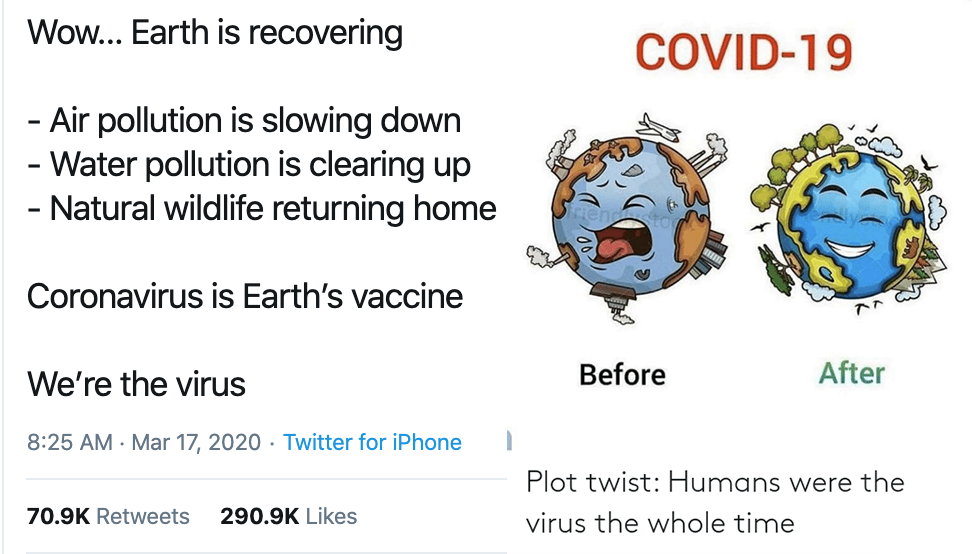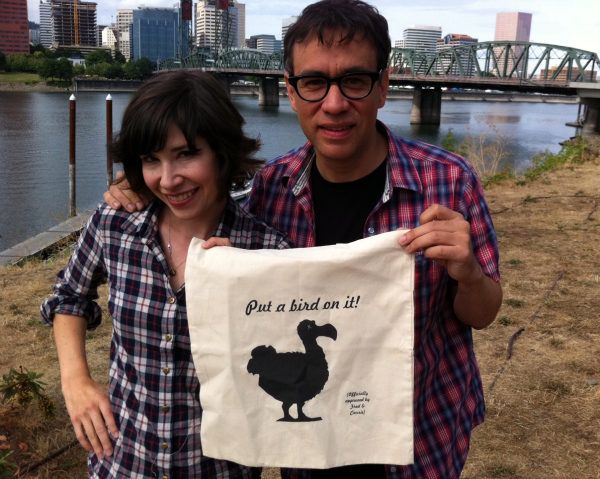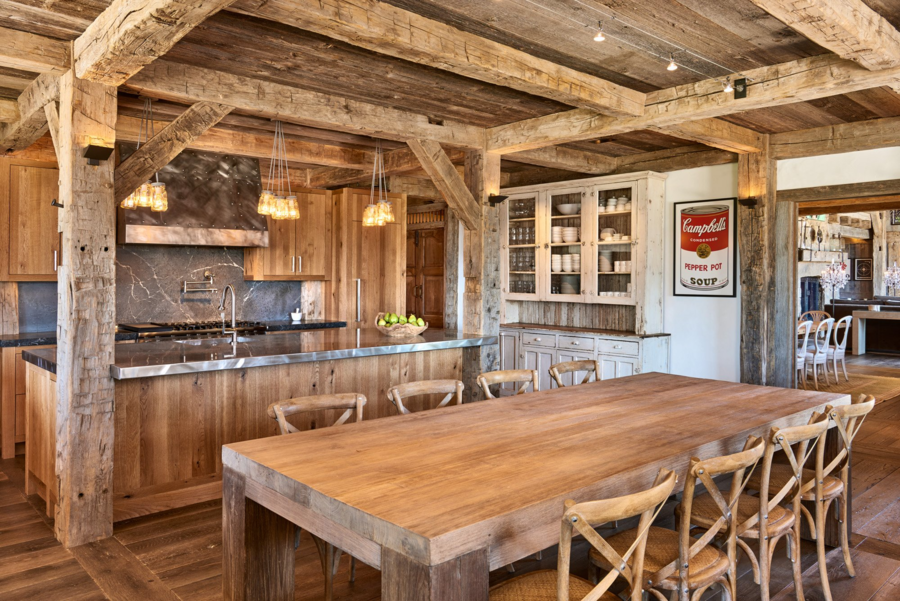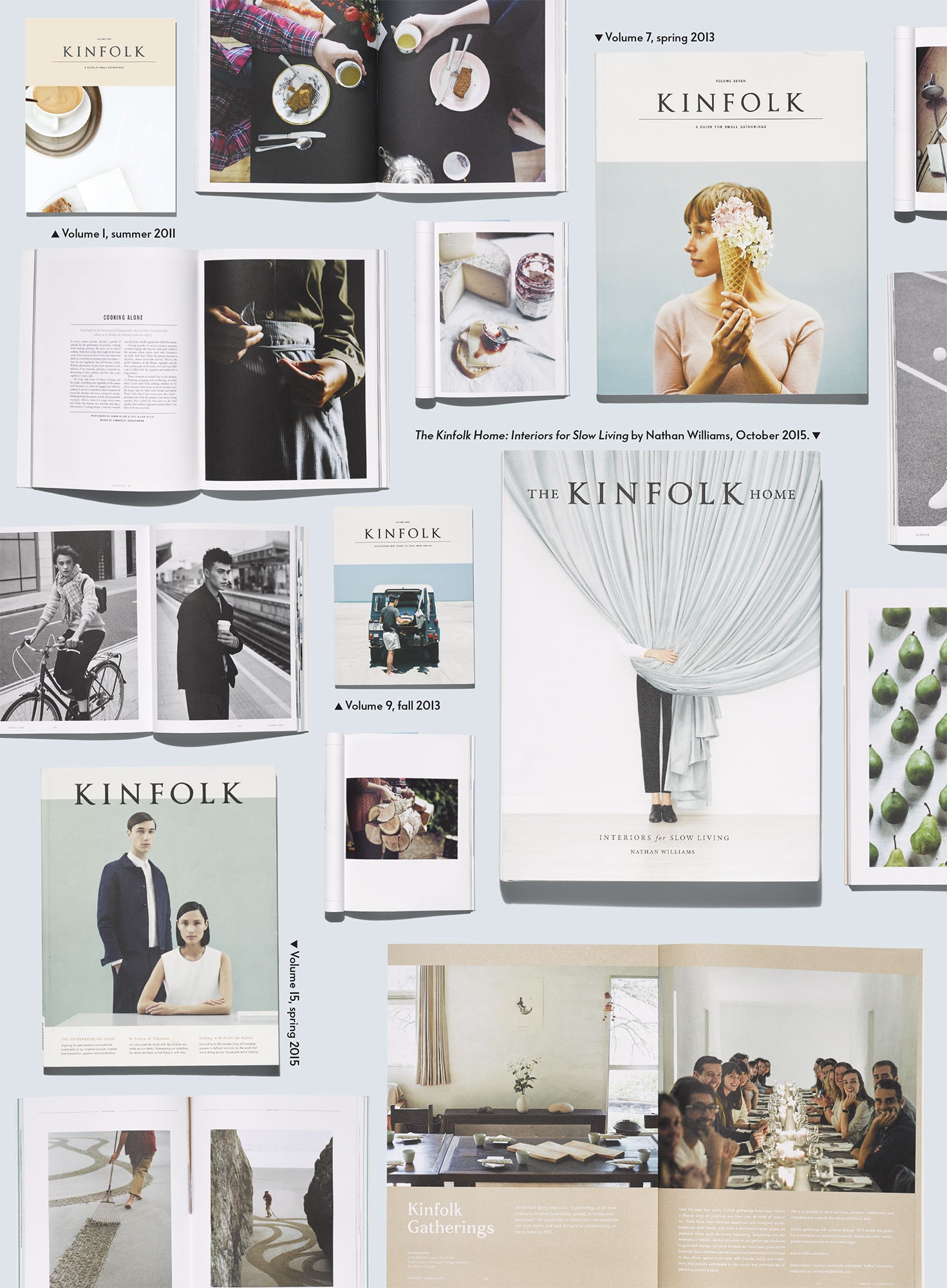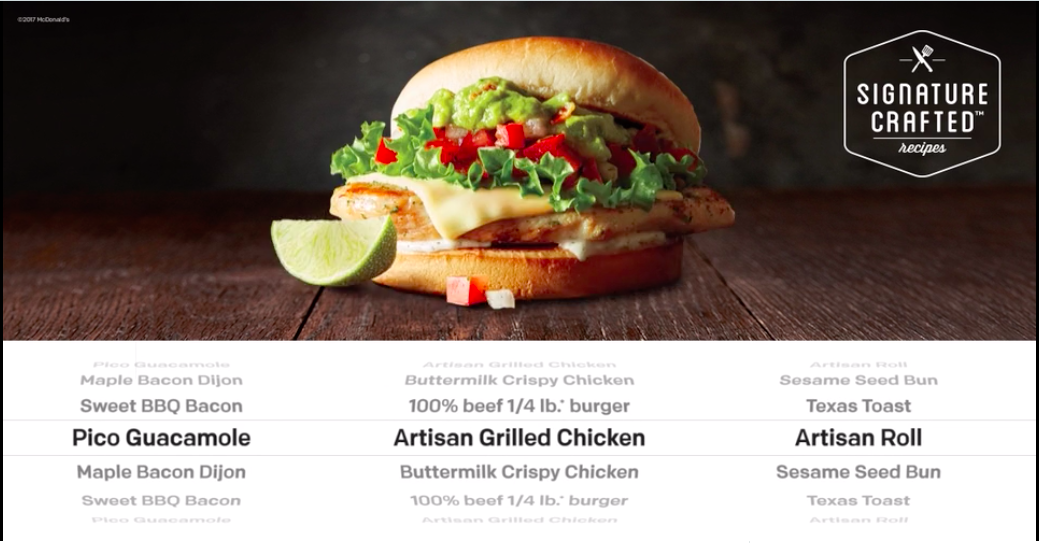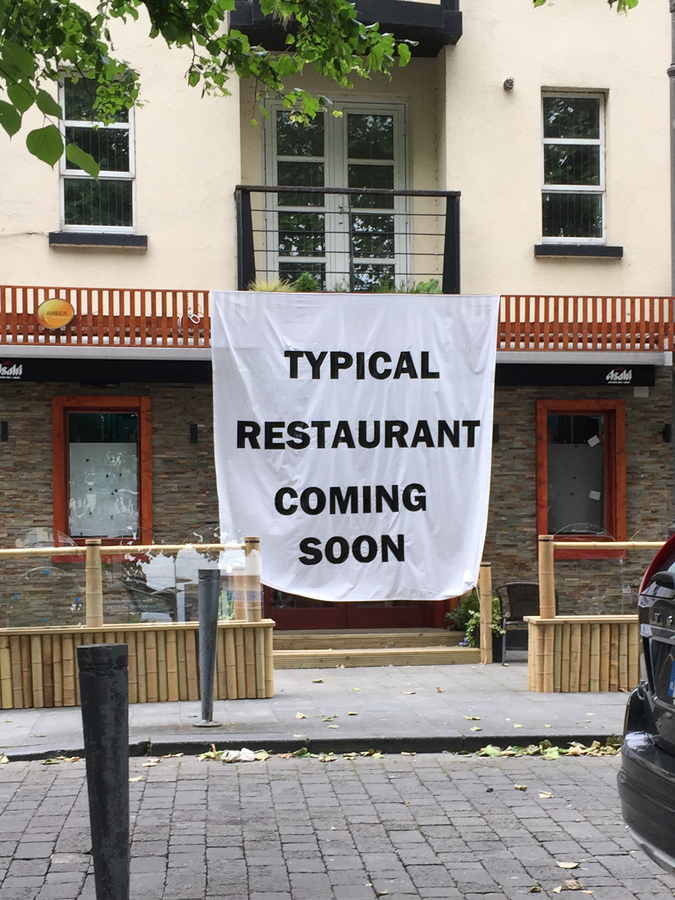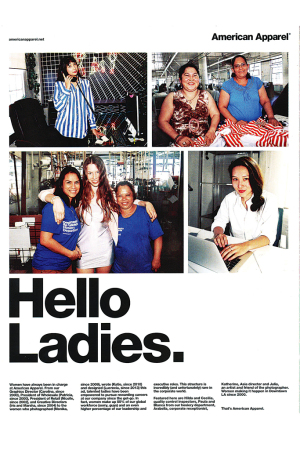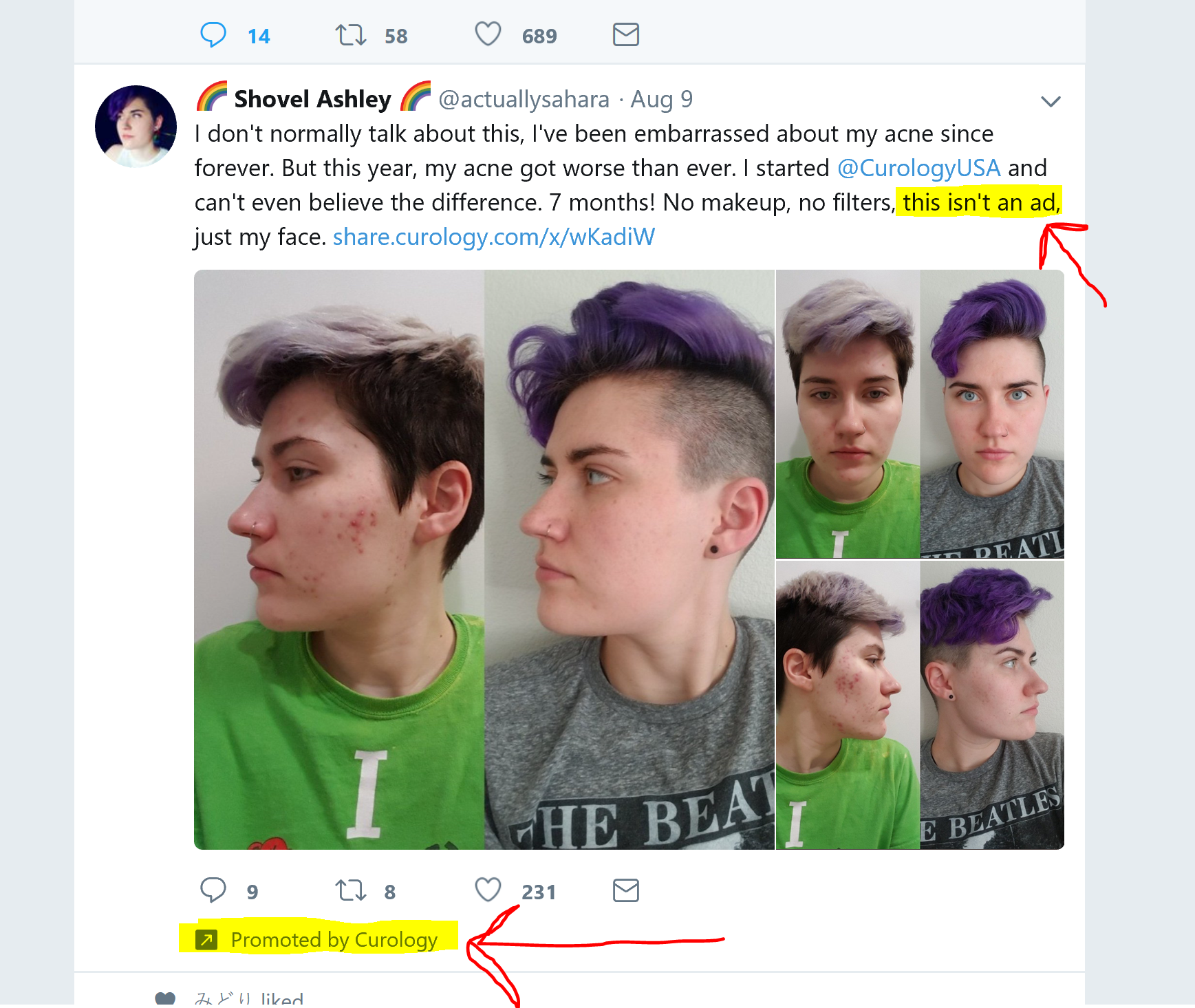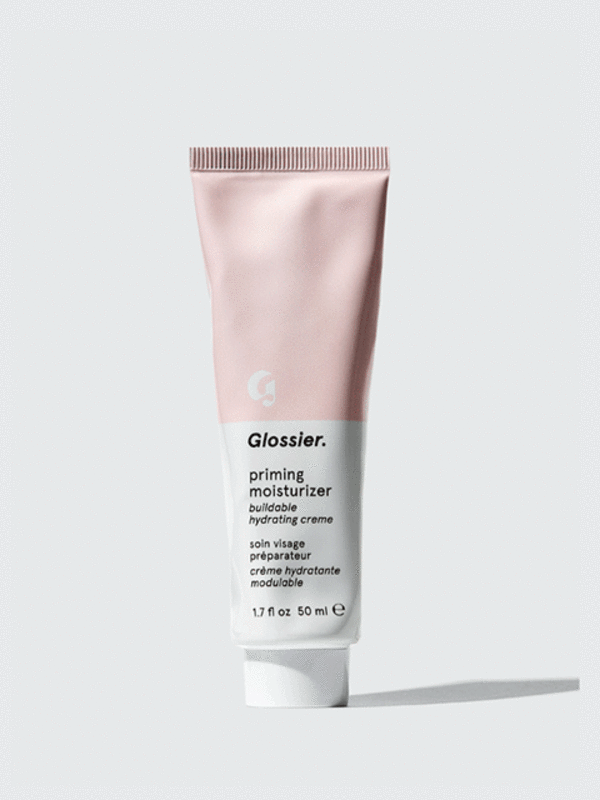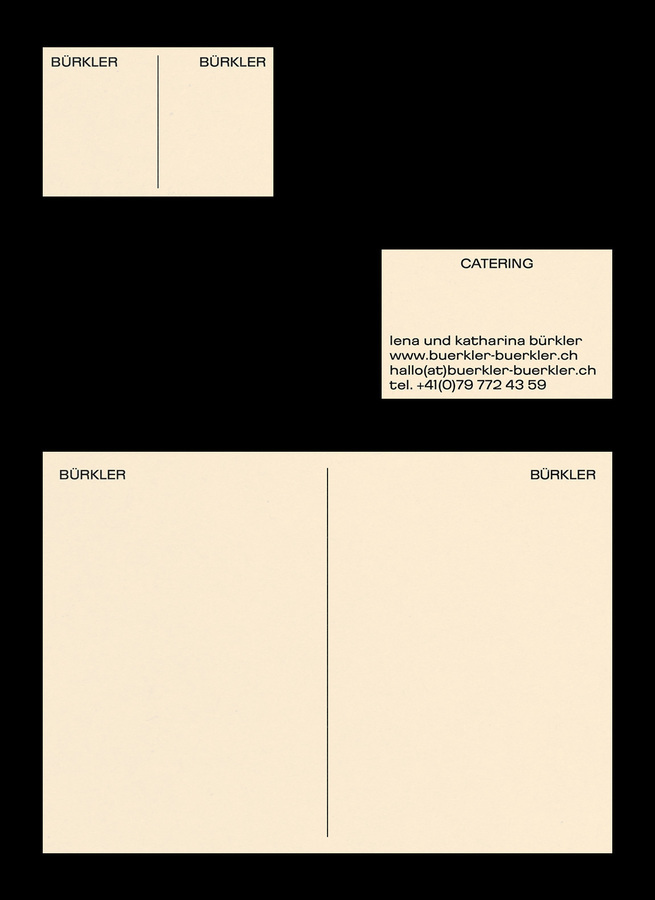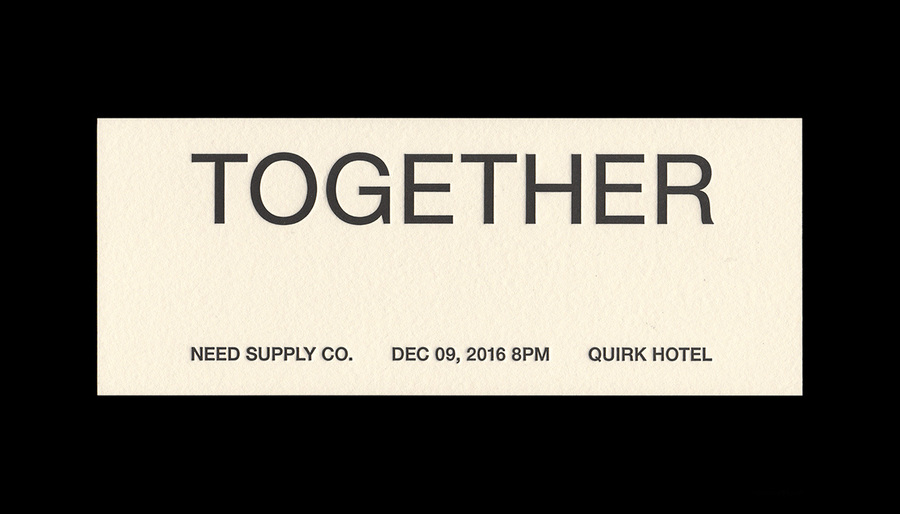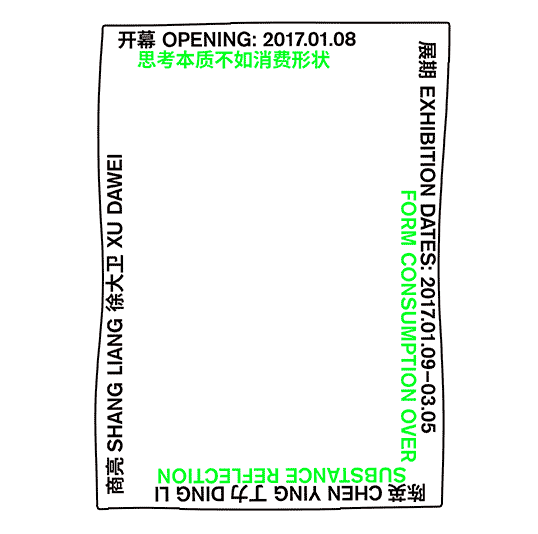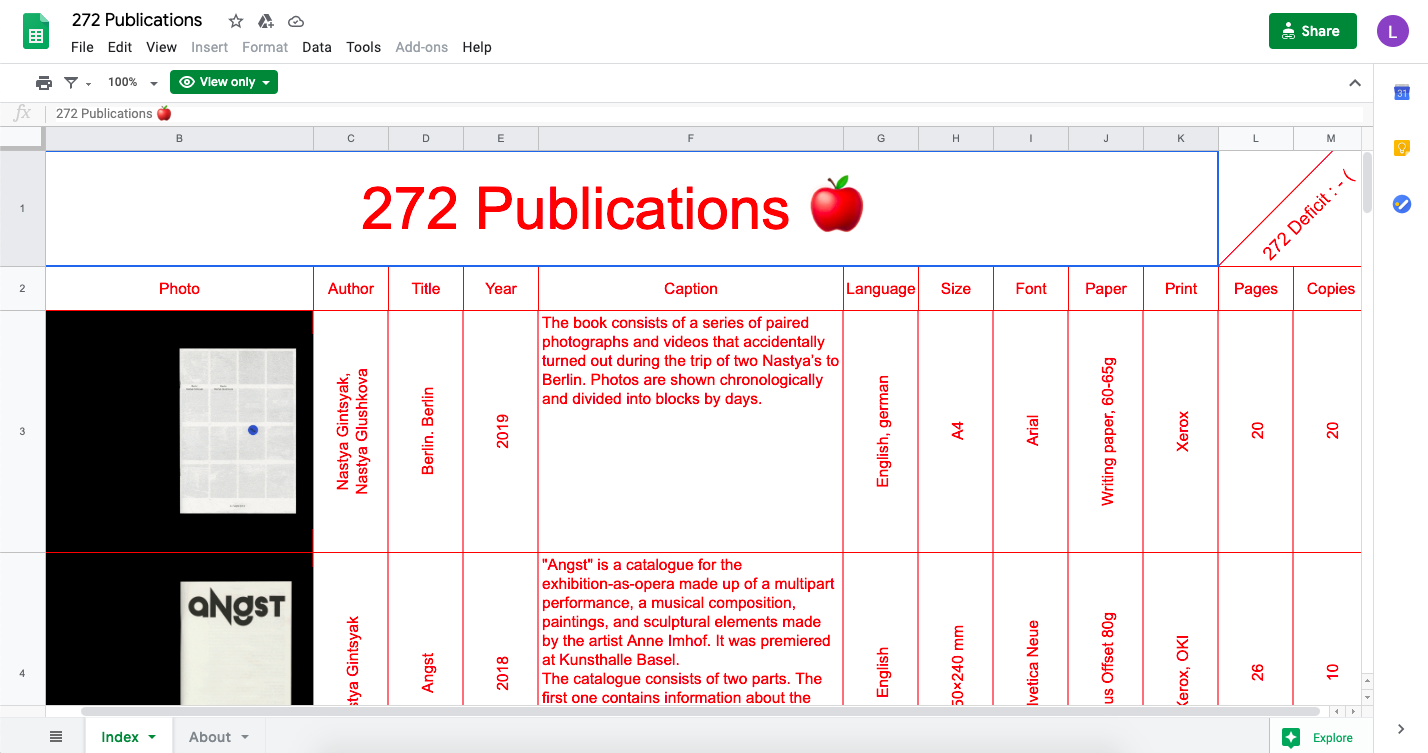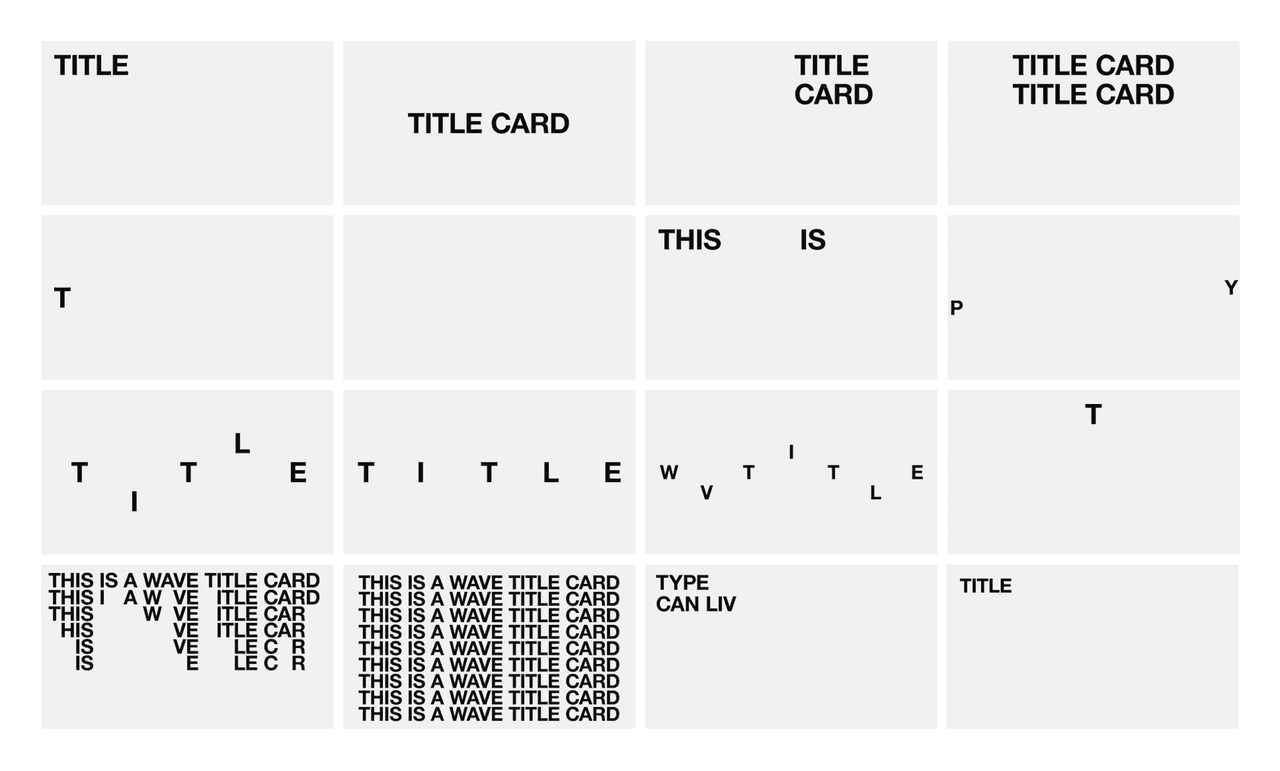4.1 Normcore as Design Methodology?
It’s clear that generic design using default systems is the preferred, virtuous approach of normcore post-authentic era branding and advertising. It’s dynamic enough to accomodate the inflating and deflating of the market, to seamlessly apply itself to any new platform, because it’s automated by its material conditions, rather than painted on top. But where does this leave graphic designers who, lured by the magical aura of design institutions, entered the field hoping to end up with a career of being creative (but now has trouble finding a job that hasn’t been turned over to a neural network)? Speaking from my own very privileged position as a soon-to-be member of this club, I see my path moving forward into the Premium Generic.
That means I’ve done well, because it is Premium, but I’ve been wrestling with the Generic part, the realization that not only do I have nothing new to offer the world, but that it wouldn’t have room for me if I did. I don’t believe that the industry seeks my or my peers’ spontaneity or wild creative ideas, the nuances of our individual fingerprints, our happy human accidents, our...authenticity. More than our originality, it seeks our efficiency and adaptability, it values the dynamism that we can channel into working under constraints, how creatively we can shuffle around default presets, how flexibly we can manipulate the pre-existing. Sure, this is a massive generalization, but if we think of graphic design as a service subject to the constantly-increasing pressure of aging capitalism, adjusted accordingly to squeeze the most output at the lowest cost, it makes sense that there’s less time and space to cycle through our natural creative processes, in our jobs and elsewhere.
We see graphic design being codified and converted into algorithms that can endlessly generate advertisements, magazine layouts, logos, posters, websites, user experiences, and so on. Although our design school curriculums generally don’t provide us with the literacy to understand the mechanics of these algorithms, we can imagine the formulas, because we’re the ones wireframing them. We find ourselves guilty of recycling the same visual language over and over, because certain tricks are tried and true and they just work, no need for trial and error, which we don’t have time for anyway. I say “guilty” because that residual authenticity-seeking urge toward novelty and innovation continues to push us to find originality within ourselves, and we kick ourselves a bit every time we fail to do so — at least I do.
But who are we — am I — trying to be original for? Myself, a client, a boss, a professor, Instagram, my mom, nobody at all? I think that it’s time to really think about who we’re creating for, so that we can strategize who deserves our originality, who deserves our efficiency, who deserves both, and who deserves neither. If there’s one thing I’m sure of after all this talk about authenticity, it’s that graphic design is a service, and since its conception it’s been loyal to industry, which makes it entirely inauthentic, but very real.
How do we deal with the degradation of being passive puppets for the icky games of the marketing industry? In the past, the answer has been to pretend that we aren’t, by shrouding the Graphic Design practice in an aura of indispensability. But could we instead embrace post-authentic normcore as a design methodology, in service to causes of our own determination? Can we figure out how to be radically adaptable, design using default systems, but in a strategic way — to conserve our energy in exploitative situations so we can go full-throttle in others?
4.2 Making the Most of the Premium Generic
The Premium Generic is just a style at the end of the day, an assortment of visual language resulting from decades of designers adapting to tightening industry constraints. It is, by nature, radically adaptable to any space and efficiently replicable by machine or human-as-machine, embodying a hefty spectrum of neoliberal virtues.
In a 2003 interview for Emigre, Rob Giampietro and Rudy VanDerLans discussed what they called “default systems design,” which is synonymous with the Premium Generic I’ve been discussing. In the article, Rob Giampietro expresses his distaste for default systems design. To him, and many others, the designer who chooses the path to least-resistance is lazy. And that’s because to treat graphic design like it’s a service, where it makes sense to optimize time and labor for maximum efficiency, undermines the aura of indispensability, superiority, and yes, authenticity that institutions such as design schools and “professional associations” rely on in order to justify the massive dollar signs they place on themselves via tuition, and member fees. This magical aura of authenticity keeps alive the belief in capital-G-D-Graphic-Design (I’m going to keep using the capital G and D here to emphasize that I’m talking about graphic design as an institution-named industry) as something essential, something that exists independently of the marketplace. Assuming Rob Giampietro still has the same opinions today as he did in 2003 (I haven’t asked), does the spirit of the Hipster live on through people like him? My favorite quote from the interview:
“This kind of [default systems design] work self-consciously positions design as stupid and trivial and says that documents of importance needn’t rely on design to shape them. Default Systems are machines for design creation, and they represent design publicly as an “automatic” art form, offering a release from the breathless pace at which design now runs, as clients ask for more, quicker, now.”
I agree that work that embraces, rather than paints over, default systems does indeed position design as “stupid and trivial” in a way, which is exactly what makes this kind of work useful to brands. The brand that has seemingly been stripped of any frivolous facade is more likely to sell a sincere, trustworthy image today. Maybe Graphic Design is stupid and trivial. Maybe work that self-consciously positions it as such is doing fellow designers a favor by challenging the aura of mystical authority we so often cling to in order to justify our occupation.
Maybe we, Graphic Designers, could benefit from embracing design with an “automatic” approach when we’re designing for brands, to make our lives easier as we struggle to keep up with the demand of late capitalism, as “clients ask for more, quicker, now.” Maybe recognizing that Graphic Design is in fact a service industry could help us figure out exactly who the recipients of that service should be. Graphic Design is certainly not some inherently innocent and credible entity, it’s a service that continues to be used (its apparent innocence exploited) as an essential tool for destruction, but like any service, it can also serve more benevolent causes. Maybe we practice lazy-defaults-design for the clients who ask us for “more, quicker, now” and expect nothing more out of us than passive mockup-generation, so that we can reserve our energy to engage in projects that need a lot of creativity, projects whose purposes are to widen, instead of seal, the cracks in the capitalist real, so that we might again feel the breeze of the outside.
I believe that design can exist without capitalism, and is in fact necessary and implicit like breathing, but capital-GD-Graphic Design is codependent with capitalism. Graphic Design only really became a named Western-accredited industry as a function of Modernist corporate identity development. Before graphic design was Graphic Design, it was called things like “printing.” A word which simply describes the action — how very normcore! Perhaps we should return to this normcore approach to graphic design, so as not to be left in the dust of our own exploded egos as Graphic Design itself is employed in an increasingly normcore fashion in marketing (which does indeed position Graphic Design as stupid and trivial).
It’s easy even for the authenticity-policing designers (the canonized guards of Graphic Design exceptionalism) to think of commercial design as stupid and trivial — plenty of them have for decades protested how Graphic Design for the Marketplace only exists to serve as a passive tool to further the capitalist agenda, to sell products and services by dressing them up (or down, which is equally a design decision), inherently an act of deception. Their way to quell their anxiety over this humiliation has been to write more manifestos — theFirst Things First manifesto of 1999, authored by some of recent history’s most canonized Graphic Designers, is a great example. Their incredibly shortsighted solution calls on designers to simply opt-out of commercial design by turning their noses up at corporate jobs, which of course is impossible for every designer seeking financial security. Even if all designers had that luxury available, to disavow collective duty to the shoulders of the individual is a classic way to circumvent addressing the very structures that render Graphic Design inherently commercial and forming actionable collective goals. Despite their gesturing, it remains clear that there can’t really be any non-commercial Graphic Design. There is simply no space for it, no “outside” of commodity production and exchange to even access.
However, we don’t have to exist as totally passive tools in the belt of corporations and the ruling elite while in a state of ignorance and political disavowal. A good place to start is by following the trajectory of critically speculative and decolonial (edit: been seeing people reject 'decolonial' design in favor of design that aims at dismantling, rather than something that *cough* by default is a tool for, white supremacy) design practice, with a serious reevaluation of what this alleged “Graphic Design” magic is, where it came from, and how it continues to reinforce powerful forces behind structural oppression. The more we understand about where exactly we stand as self-proclaimed Designers, the more likely we’ll be able to re-calibrate our perception of reality and speculate new models. One thing I read recently that I found very enlightening to this subject is Jacob Lindgren’s Graphic Design’s Factory Settings. Lindgren describes how Graphic Design’s history has cemented its position as “hard-coded to capital” and perpetuates a status quo in service to oppressive systems despite claiming apolitical innocence. He calls for new attitudes in graphic design pedagogy, aimed not at preserving Modernist traditions assigned by the Bauhaus, but teaching graphic design politics-first, either in alternative educational spaces “running parallel or diagonal to established institutions” or completely independently.
Thinking in this way is useful for my discussion here for two main reasons. First: Understanding the history of Graphic Design clarifies how inextricably linked it is to harmful structures, making it almost impossible to maintain any belief that it's inherently innocent or apolitical, or that it could ever exist independently or outside of capitalism. We need to unlearn the possibility that Graphic Design is a romantic other, just like the myth of authenticity. We can even repeat Rob Horning’s quote and substitute “authenticity” for “Graphic Design”: it’s “not ‘outside of mere consumer culture’; it is instead the apotheosis of that culture.” That’s why I speak so reductively about it as a function of marketing throughout this essay, because when there’s no outside, no singular and virtuous real, everything is an advertisement.
And secondly: In order to have a discussion or even think about default aesthetics in graphic design, we should acknowledge that what we perceive and accept as “default” derives from layers of ordering and levels of systematization all the way down to language and mathematics and theoretically we could keep going all the way to the atomic level or end up in Plato’s cave or something. Basically, every “default” exists because of someone else’s design decision, along with their implicit bias, and this can be easy to forget, especially when we’re having so much fun pushing buttons and arranging pre-loaded elements on a Google doc, and we unquestioningly think of that action as democratically designing with defaults, remarking on Helvetica’s versatility as if its defaultness doesn’t carry a history of white supremacy.
The problem with default systems design, or the Premium Generic, isn’t that it contains some hidden agenda threatening the authority and credibility of design itself, as Giampietro seems to think. If there’s a problem with it, it’s because of our own attitude while using it. It is just a style, and it’s only inherently political to the extent that it’s indicative of the conditions that produced it, though it’s up to the designer to go the extra step and draw these conditions to the surface. If we treat the Premium Generic as if it’s inherently making a statement, letting it do the work for us, then it doesn’t go far enough. By automatically accepting any “default” signifiers as “normal”, we’re failing to question the structures which automate these presets. While it can be useful to embrace this normalcy, it’s only productive as long as we are being normcore responsibly.
We need to recognize and make use of the systems automating the conditions in which we operate in order to optimize accordingly, but we shouldn’t accept them as the only possible reality. It’s unproductive to still be attacking designers for using Premium Generic aesthetics because we fear their laziness disrupting the mystical credibility and necessity of design, making it look “stupid and trivial”, but we should be aware of our own myopia when accepting anything “normal” as inherently true, democratic, or accessible. Any design claiming its defaultness to sell an image of honesty, sincerity, or transparency should raise red flags. The association between factory defaults and computer presets with such values is, just like the Premium Mediocre, a marketing gimmick for the purpose of selling a virtuous image of reality. Even something like a plain HTML web page is not transparent, it’s simply reductive. Reducing something down to its “basic” aesthetic structure doesn’t make it transparent, it’s still opaque in that it’s still covering up the mechanics that automated it.
Maybe a truly default web page doesn’t rely on the aesthetic signifiers of defaultness (as this one does). Maybe it would just be a presentation of its code, and framing that code in a critical conversation about the politics present in the programming language itself. I don’t know. I’m not saying that this is how web pages “should be”, I’m saying that I, too, see a problem with Premium Generic defaultness — not as an aesthetic, but the idea that a set of signifiers could contain inherent denotative meaning and virtue. For a designer to survey the automated tools readily available and easily manipulate them into designs that are sufficiently marketable in both form and efficiency (low-labor, low-investment, low-risk input, high-speed and high-profit output) to keep up with the demand required to stay afloat in late capitalism seems like a great short-term way to get by. It’s only “lazy” if it stops there, without first developing a critical eye to investigate these defaults more deeply, then strategizing which levels of defaultness are worth adapting to. If we unlearn Graphic Design’s claim to authenticity and need for originality, we can optimize for ourselves the way the industry optimizes our labor. Then, maybe we can even make time for a further investigation into these default systems, learning their mechanics and speculating alternative default systems (alternative realities! New normals!) in order to automate in different ways.
Rob Giampietro + Rudy VanderLans, Default Systems Design, From Emigre #64, 2003
Default Systems Design disgusts Rob Giampietro. And maybe we, graphic designers, could benefit from embracing design with an “automatic” approach when we’re designing for brands, to make our lives easier as we struggle to keep up with capital, as “clients ask for more, quicker, now.”
Some Premium Generic work that I admire
Various authors, First Things First 2000, From Emigre #51, 1999
A manifesto written to renew a 1964 version signed by a different group of prominent designers to "call for our skills to be put to worthwhile use," because "with the explosive growth of global commercial culture, their message has only grown more urgent."
“Self-organization education as one tool among many, which can be used to think through and act on these challenges. In order to do so we need to leave the factory, potentially by building our own school-as-exit. If we can’t leave, or decide to stay, we need to repurpose its machinery and organize ourselves appropriately.”
Jacob Lindgren, Graphic Design's Factory Settings
Maybe we practice lazy-defaults-design for the clients who ask us for “more, quicker, now” and expect nothing more out of us than passive mockup-generation, so that we can reserve our energy to engage in projects that need a lot of creativity, projects whose purposes are to widen, instead of seal, the cracks in the capitalist real, so that we might again feel the breeze of the outside.

